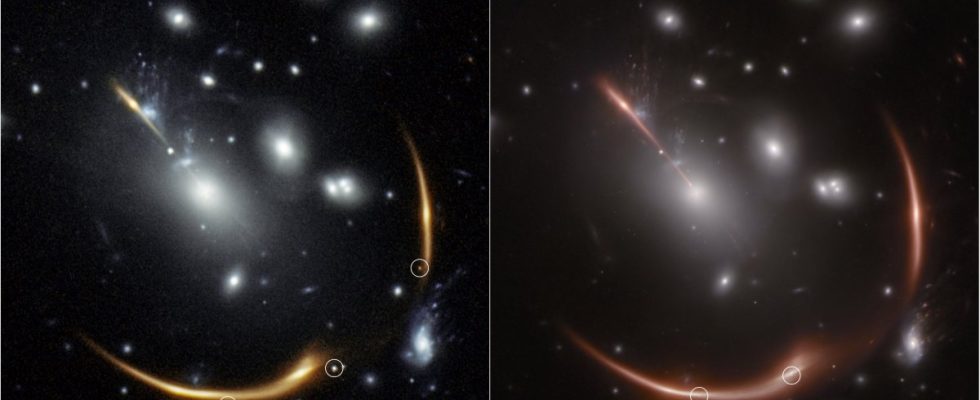A galaxy in which a single supernova can be seen several times thanks to a gravitational lens has another surprise in store for astronomy: As a research group made public before the turn of the year, another supernova occurred there just seven years after the previously known supernova. Both stellar explosions will be observed again in more than ten years and are expected to provide enormously valuable data on the speed of expansion of the universe. It is the first time that more than one supernova has been detected in a galaxy behind a gravitational lens.
Advertisement
Suitable for precise distance measurement
The supernovae were found in the galaxy MRG-M0138. On its way to us, their light is deflected by the gigantic galaxy cluster MACS J0138.0-2155 in such a way that it reaches us in several ways. Years later, the first supernova was discovered three times in images taken by the Hubble Space Telescope in 2016. Calculations then showed that it should be visible again around 2037. It was also exciting because the supernova was unusually far away at a distance of 10 billion light years and because it is a type Ia supernova that can be used to measure distances.
During an observation with the new James Webb space telescope, a second supernova was discovered there. This will also appear again in the future, which together creates a unique opportunity to explore the cosmos. That’s how it is according to the Space Telescope Institute also a Type Ia supernova. This means that both can be used as standard candles for precise distance determination. It is now assumed that the first supernova will be visible again as early as 2035, and the second would then have to follow later.
Explosions from dying stars are usually largely unpredictable, which is also why they are so interesting. Because the first light from the supernovae has already reached us, it is still traveling along a different path. That’s why we can predict both explosions with comparative precision based on the available data. When the time comes, the best instruments can be aligned in good time. What these will be can only be estimated. Hubble and the James Webb Space Telescope will probably no longer be there.
(mho)

